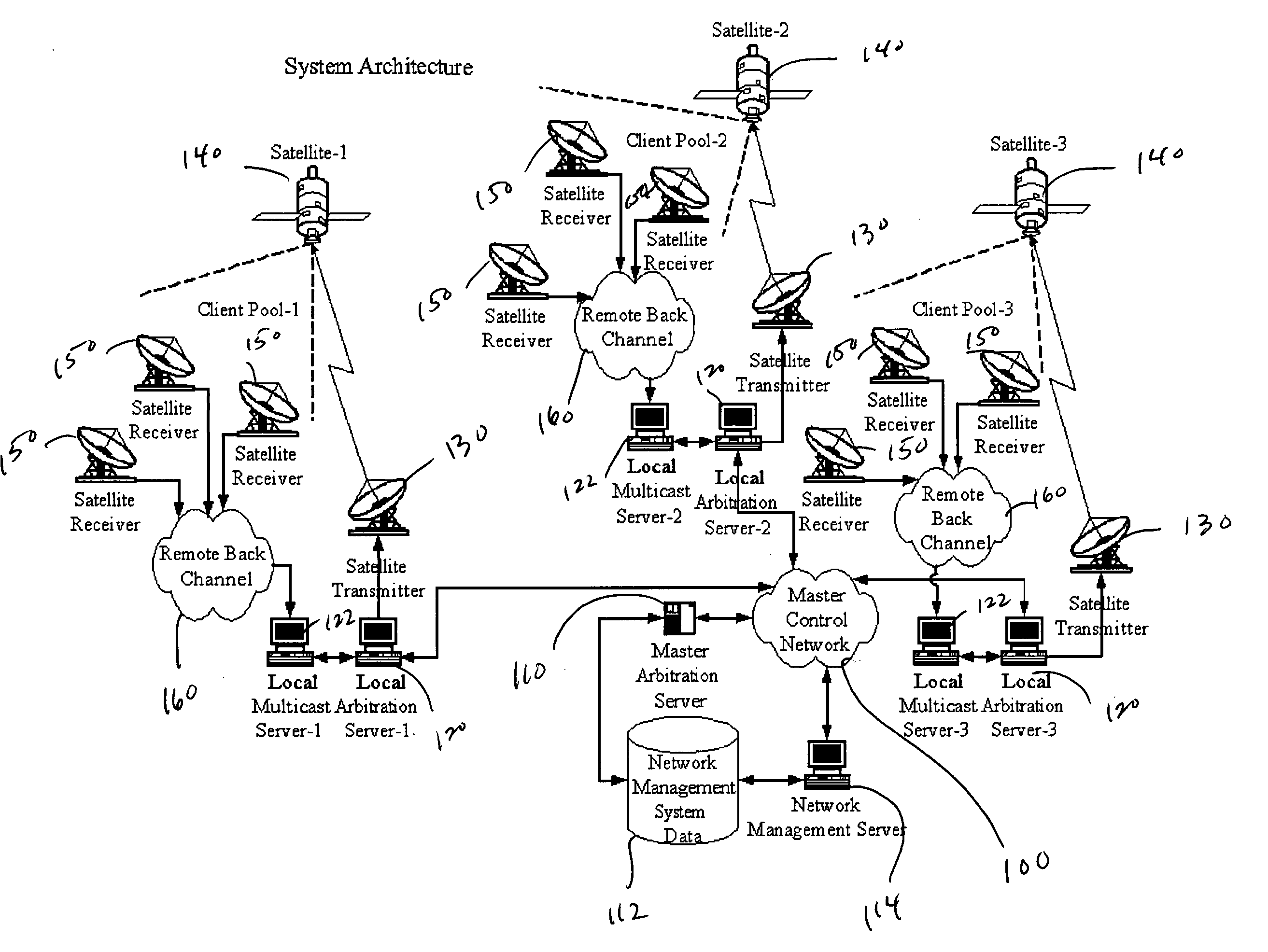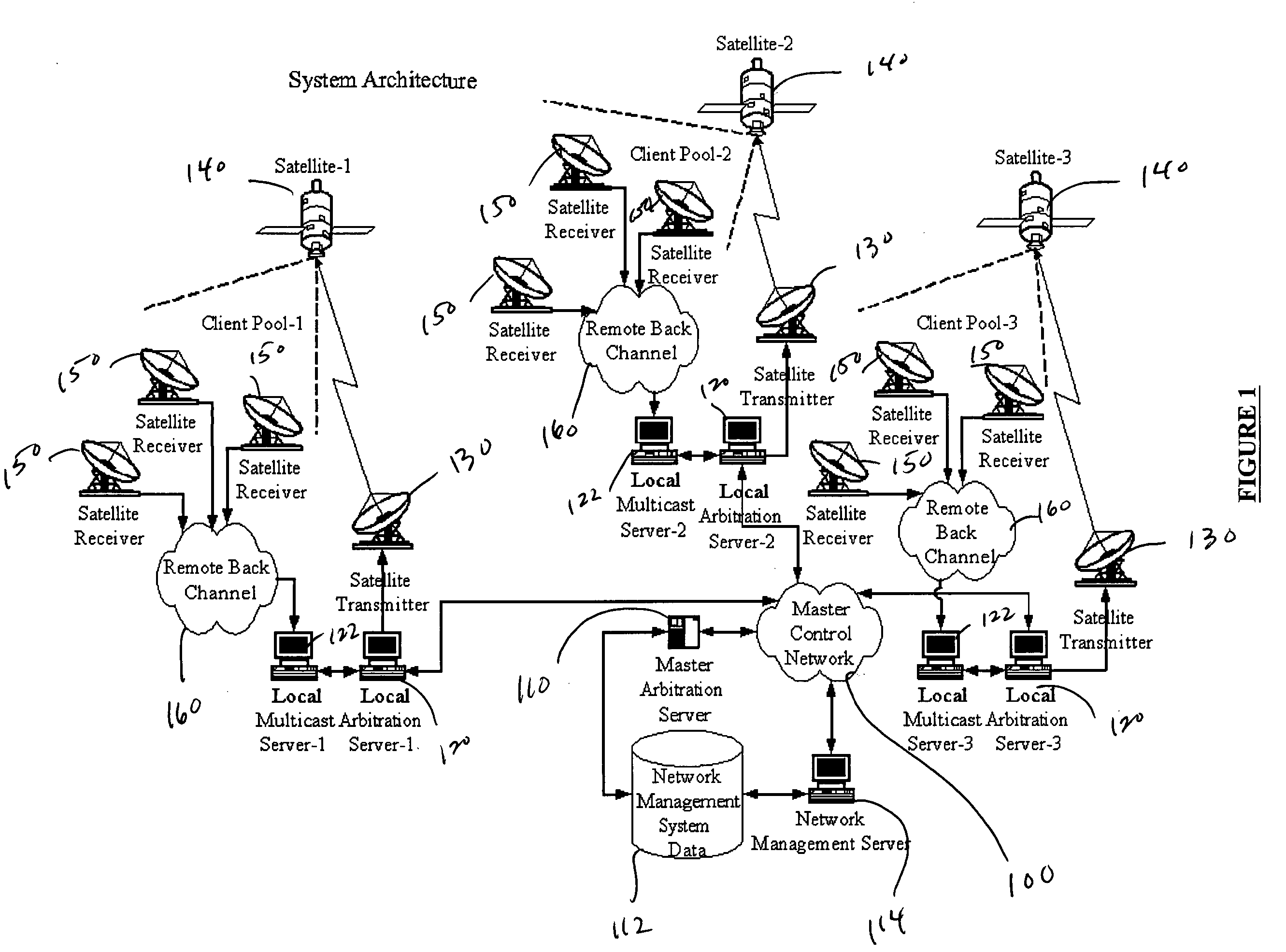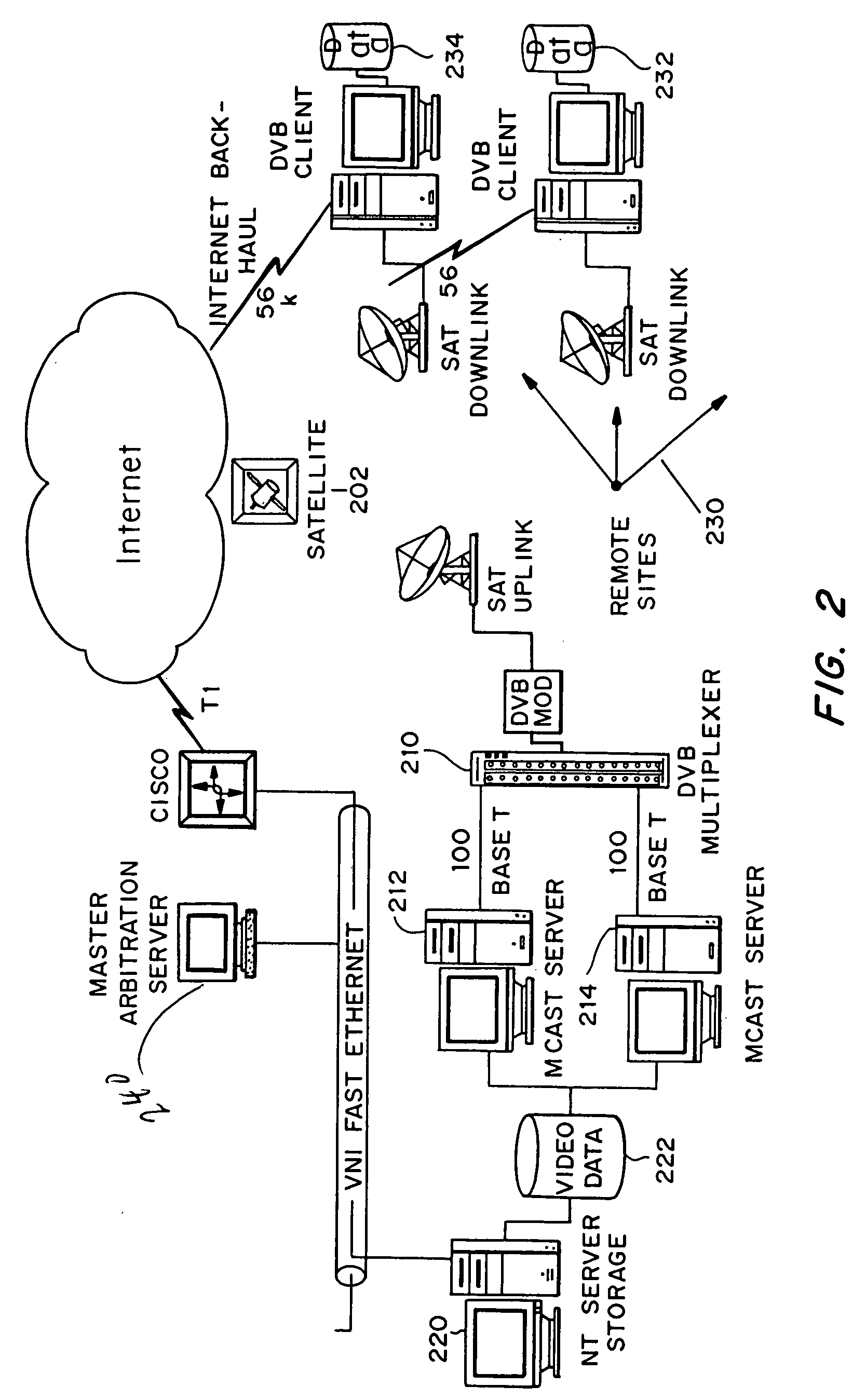Multicast control systems and methods for dynamic, adaptive time, bandwidth,frequency, and satellite allocations
a multicast control system and adaptive time technology, applied in the field of satellite data networks, can solve the problems of time-consuming and inefficient transponder time, increased transmission costs and usage, and inability to adjust the dynamic and adaptive time of the client computer, so as to improve the rate at which the client computer can receive file transfers and improve the performance of multicast file transfers
- Summary
- Abstract
- Description
- Claims
- Application Information
AI Technical Summary
Benefits of technology
Problems solved by technology
Method used
Image
Examples
Embodiment Construction
Before describing the drawings and certain exemplary, preferred embodiments in more detail, several terms are described below in an effort to clarify the terminology used herein. Additional and fuller understanding of these terms will be clear to persons skilled in this art upon reading this entire document. 100baseT: Ethernet network 100 megabit per second interconnection. Client: A client is a program, which interacts with a Server program that may be on a remote machine. CRC: Cyclic Redundancy Check—a type of checksum used to validate data, generally after storage or transport. DNS: Domain Name System DVB: Digital Video Broadcast EDI: Electronic Data Interchange FDM: Frequency Division Multiplexing IP: Internet Protocol Local Arbitration Server: This is a computer, such as a workstation, which runs software to allow it to determine which jobs to put into the queue on what schedule and on what bandwidth. The local arbitration server has a view of the demand for the resou...
PUM
 Login to View More
Login to View More Abstract
Description
Claims
Application Information
 Login to View More
Login to View More - R&D
- Intellectual Property
- Life Sciences
- Materials
- Tech Scout
- Unparalleled Data Quality
- Higher Quality Content
- 60% Fewer Hallucinations
Browse by: Latest US Patents, China's latest patents, Technical Efficacy Thesaurus, Application Domain, Technology Topic, Popular Technical Reports.
© 2025 PatSnap. All rights reserved.Legal|Privacy policy|Modern Slavery Act Transparency Statement|Sitemap|About US| Contact US: help@patsnap.com



